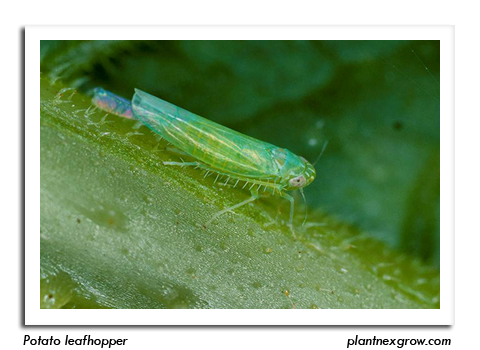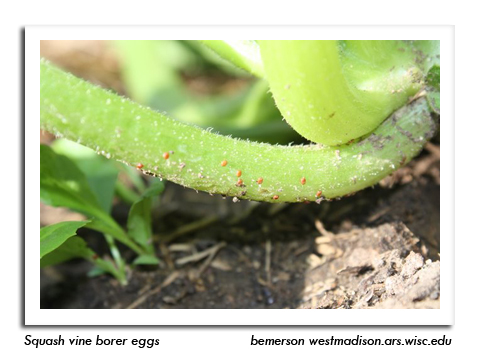
 |
|
|
Vegetables
Volume 52 Number 8 Date 06/15/2017 POTATO LEAFHOPPER - Counts in snap beans and potatoes could increase markedly this month as leafhopper reproduction intensifies and harvesting of second-crop alfalfa begins. Commercial vegetable growers should use an insect sweep net to monitor fields, taking 25 sweeps per sample site and sampling from at least five sites per 30 acres. Counting nymphs and adults by turning over 25 leaves from the middle of the plant is the protocol for gardens or smaller-acreage farms. Recommended treatment thresholds for potatoes are one adult per net sweep or an average of 2.5 nymphs and adults on the undersides of 25 potato leaves. In snap beans, the threshold is 0.5 adults and nymphs per sweep for seedlings, and one leafhopper per sweep for larger plants in the third trifoliate to bud stages. SQUASH VINE BORER - Moths were observed in a La Crosse County home garden on June 9, confirming that adult emergence and oviposition has started. Close inspection of pumpkins, squash, gourds, and other vine crops for eggs and evidence of larval boring should begin once 900 degree days (simple base 50°F) have been reached around the third week of June. Insecticides for SVB control must be applied before the larvae bore into vines and become protected by vine tissue. Applying treatments while runners are shorter than two feet long is most critical. Two to three applications made five to seven days apart may be required during the three-week oviposition period. IMPORTED CABBAGEWORM - Adult butterflies have become more common this month and larvae of varying sizes can be found on cabbage, cauliflower and broccoli in most vegetable plantings. Manual removal of the caterpillars is suggested for smaller gardens, while treatment with a product containing the bacterial insecticide Bacillus thuringiensis (Bt) subspecies aizawi (Agree, Xentari) or subspecies kurstaki (Biobit, Cutlass, DiPel, Javelin, Lepinox, MVP, Thuricide) can be considered for larger production fields. Bt is most effective against small larvae and may not control larger, full-grown caterpillars. Most Bt products persist on plants only a few days and must be reapplied if small larvae are actively feeding. LATE BLIGHT - Disease severity value accumulations near Grand Marsh, Hancock and Plover may exceed the late blight risk threshold next week, indicating that the conditions required for disease development will have been met. Home gardeners and farmers, whether conventional or organic, should consider preventative fungicide applications to protect their tomatoes and potatoes. No cases of late blight have been confirmed in Wisconsin as of June 15. -- Krista Hamilton, DATCP Entomologist 



.jpg)
|
|
|